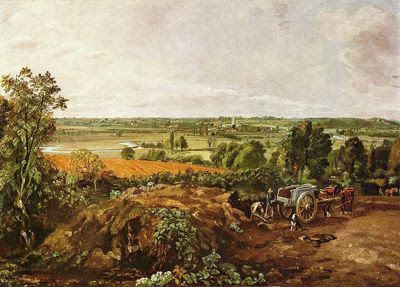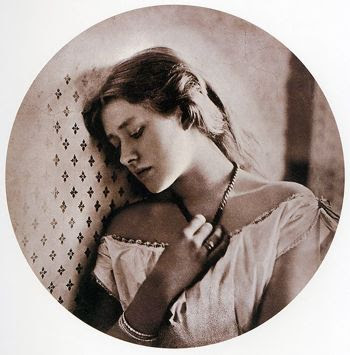 June 11, 1776: John Constable, English painter, was born. "John Constable was an English Romantic painter. Born in Suffolk, he is known principally for his landscape paintings of Dedham Vale, the area surrounding his home—now known as "Constable Country"—which he invested with an intensity of affection. "I should paint my own places best", he wrote to his friend John Fisher in 1821, "painting is but another word for feeling". His most famous paintings include Dedham Vale of 1802 and The Hay Wain of 1821. Although his paintings are now among the most popular and valuable in British art, he was never financially successful and did not become a member of the establishment until he was elected to the Royal Academy at the age of 52. He sold more paintings in France than in his native England."
June 11, 1776: John Constable, English painter, was born. "John Constable was an English Romantic painter. Born in Suffolk, he is known principally for his landscape paintings of Dedham Vale, the area surrounding his home—now known as "Constable Country"—which he invested with an intensity of affection. "I should paint my own places best", he wrote to his friend John Fisher in 1821, "painting is but another word for feeling". His most famous paintings include Dedham Vale of 1802 and The Hay Wain of 1821. Although his paintings are now among the most popular and valuable in British art, he was never financially successful and did not become a member of the establishment until he was elected to the Royal Academy at the age of 52. He sold more paintings in France than in his native England."- - -

June 11, 1815: Julia Margaret Cameron, English photographer, was born. "Julia Margaret Cameron was a British photographer. She became known for her portraits of celebrities of the time, and for photographs with Arthurian and other legendary themes. Cameron's photographic career was short, spanning eleven years of her life (1864-1875). She took up photography at the relatively late age of 48, when she was given a camera as a present. Her work had a huge impact on the development of modern photography, especially her closely cropped portraits which are still mimicked today. Her house, Dimbola Lodge, on the Isle of Wight is open to the public.
- - -
 June 11, 1864: Richard Strauss, German composer and conductor, was born. "Richard Georg Strauss was a leading German composer of the late Romantic and early modern eras, particularly of operas, Lieder and tone poems. Together with Gustav Mahler he represents the extraordinary late flowering of German Romanticism, after Wagner, in which pioneering subtleties of orchestration are combined with an advanced harmonic style. Strauss's music had a profound influence on the development of music in the twentieth century. Like Mahler, Strauss was also a prominent conductor."
June 11, 1864: Richard Strauss, German composer and conductor, was born. "Richard Georg Strauss was a leading German composer of the late Romantic and early modern eras, particularly of operas, Lieder and tone poems. Together with Gustav Mahler he represents the extraordinary late flowering of German Romanticism, after Wagner, in which pioneering subtleties of orchestration are combined with an advanced harmonic style. Strauss's music had a profound influence on the development of music in the twentieth century. Like Mahler, Strauss was also a prominent conductor."- - -

June 11, 1879: Max Schreck, German actor, was born. "Friedrich Gustav Max Schreck was a German actor. He is most often remembered today for his lead role in the film Nosferatu (1922). For three years between 1919 and 1922, Schreck appeared at the Munich Kammerspiele, including a role in the expressionist production of Bertolt Brecht's debut, Trommeln in der Nacht (Drums in the Night) (in which he played the "freakshow landlord" Glubb). In 1921, he was hired by Prana Film for their first and only production, Nosferatu. The company declared itself bankrupt after the film was released to avoid paying copyright infringement costs to Florence Stoker, Dracula author Bram Stoker's widow. Schreck portrayed Count Orlok, a character analogous to Count Dracula."
"In 1923, while still in Munich, Schreck appeared in a 16-minute (one-reeler) slapstick, "surreal comedy" written by Bertolt Brecht entitled Mysterien eines Friseursalons (Mysteries of a Barbershop), directed by Erich Engel. In 1926, Schreck returned to the Kammerspiele in Munich and continued to act in films surviving the advent of sound until his death in 1936 of heart failure. He was married to actress Fanny Normann, who appeared in a few films, often credited as Fanny Schreck. Curiously, the word schreck is also the German word for fright, or terror. Because of this, many authors who were unaware of Schreck's on-stage credits (and ignorant of the rather sparse details of his personal life) speculated that there was really no such person, and that Schreck was, in fact, some well-known actor who had chosen to adopt a pseudonym for his role in Nosferatu. Schreck's contemporaries recalled he was a loner with an unusual sense of humor and skill in playing grotesque characters. One reported he lived in "a remote and strange world" and that he spent time walking through dark forests."
"In 1923, while still in Munich, Schreck appeared in a 16-minute (one-reeler) slapstick, "surreal comedy" written by Bertolt Brecht entitled Mysterien eines Friseursalons (Mysteries of a Barbershop), directed by Erich Engel. In 1926, Schreck returned to the Kammerspiele in Munich and continued to act in films surviving the advent of sound until his death in 1936 of heart failure. He was married to actress Fanny Normann, who appeared in a few films, often credited as Fanny Schreck. Curiously, the word schreck is also the German word for fright, or terror. Because of this, many authors who were unaware of Schreck's on-stage credits (and ignorant of the rather sparse details of his personal life) speculated that there was really no such person, and that Schreck was, in fact, some well-known actor who had chosen to adopt a pseudonym for his role in Nosferatu. Schreck's contemporaries recalled he was a loner with an unusual sense of humor and skill in playing grotesque characters. One reported he lived in "a remote and strange world" and that he spent time walking through dark forests."

No comments:
Post a Comment